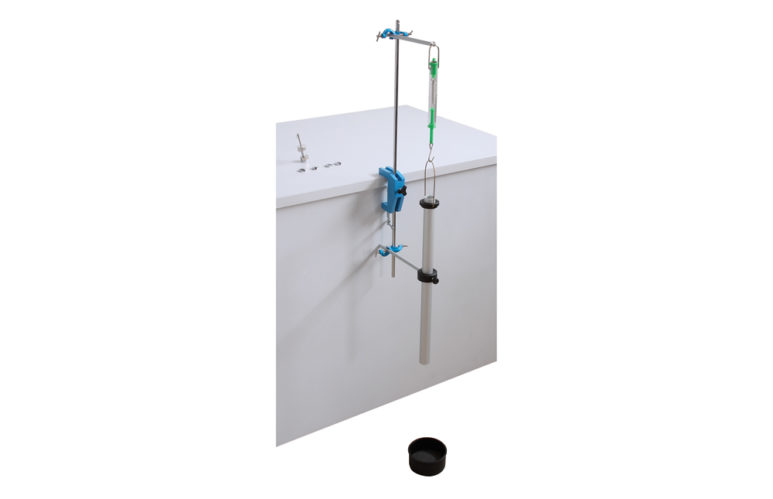1 Table clamp
2 Double bossheads
2 Rod 750 x 10 mm
1 Spring scale 1000 g
1 Kit of magnets
4 10 g masses, diameter 4 mm
1 Aluminium tube with ring-shape support
1 Container to collect the magnets
1 Ring-shape PVC support for tube
1 Support for spring scale
1342
Apparatus to verify the electromagnetic induction law and the principle of action-reaction
Inside the aluminium tube, a magnet falls with uniform motion. The explanation is the following: during the fall of the magnet, the aluminium tube is linked to a variable magnetic flux and therefore it has induced currents whose directions, according to Lenz’s law, are opposite to what has generated them, i.e. the magnet’s motion, in this case. The consequence is that the latter , in the beginning phase, falls with uniformly accelerated motion because it’s moved by a vertical force whose intensity is equal to the difference between its weight P and the electromagnetic force F.
This force is proportional and opposed to the speed of the fall, i.e. it is a viscous force: F = – kv. The moment the magnet reaches the speed v0 so that P – kv0 = 0, its motion becomes uniform.
Thanks to the principle of action and reaction, the magnet reacts on the tube with an equal and opposite force and, therefore, during the fall with uniform motion of the magnet, the spring scale measures a force with an intensity equal to the sum of the tube’s and the magnet’s weights.
Related Literature:




